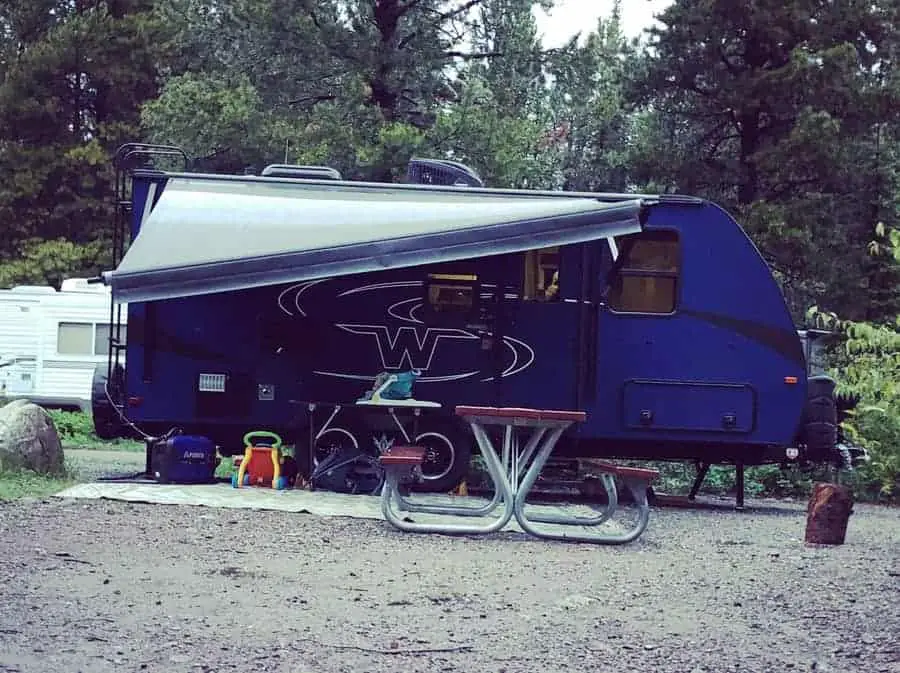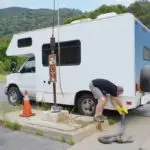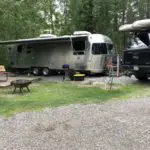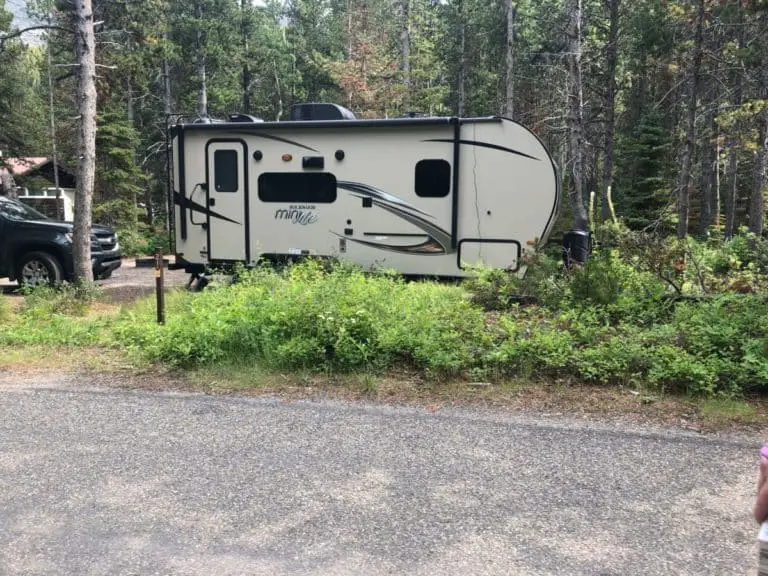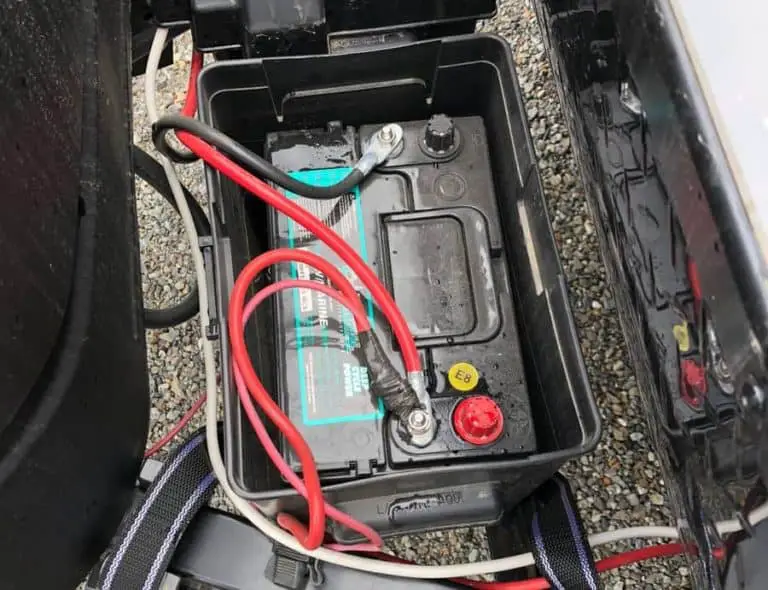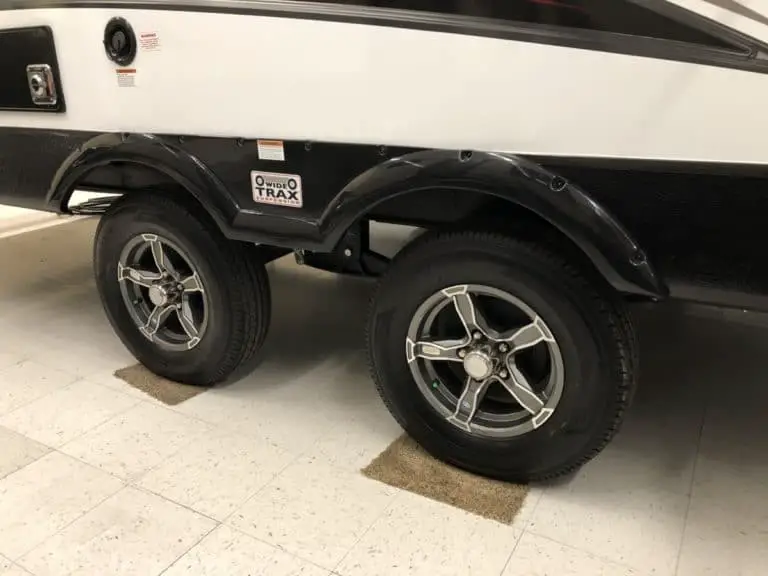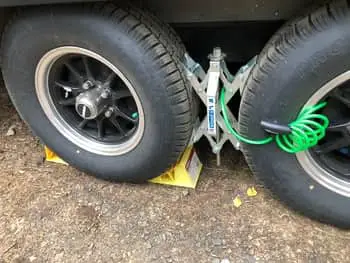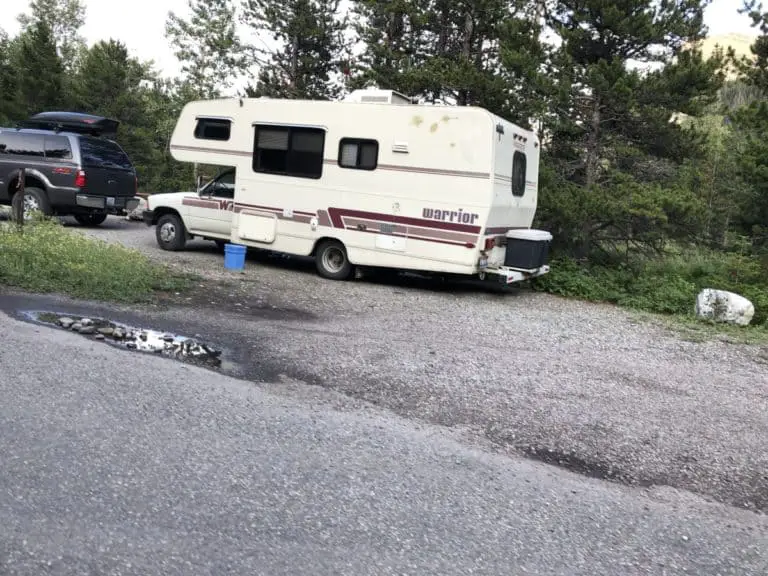How much solar do you need for your RV?
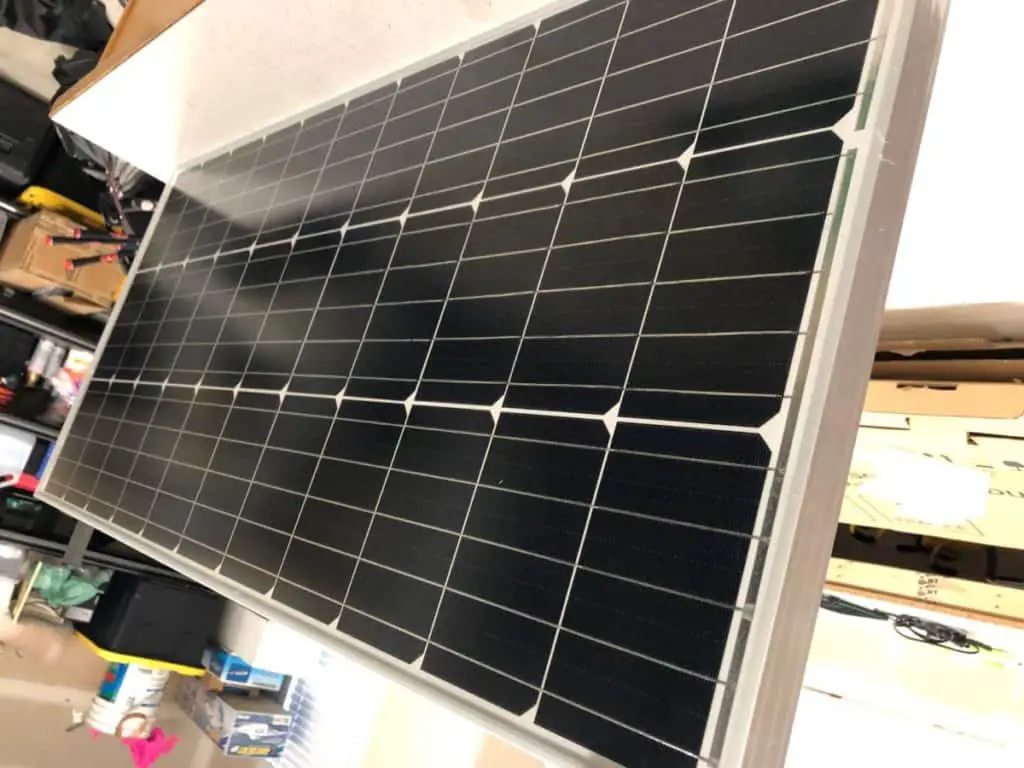
Installing solar on your travel trailer, camper, or RV can help extend your off grid camping trips from a few days to indefinitely. Essentially, if you have enough solar on your roof for your needs, you will never run out of power. Read the rest of this article to find out the basics of solar and a good estimate of how much wattage you will need for your travel trailer.
How much solar do you need for your RV? RV solar panels are usually 100 watts and produce about 6 amps per hour during peak sun times. On average, you receive 5 hours of peak sun daily. This equates to 30 amp hours of charge. For the typical RVer, this is enough to keep batteries full while utilizing basic trailer functions when camping.
Why do you want solar?
To determine if you want solar, you need to specify what are your goals for installing it. Do you simply want to keep your trailer batteries topped off while in storage at a storage unit or at the side of your house without having to pay for power to trickle charge your batteries? Do you want to supplement your batteries while you take the occasional weekend trip? Do you want to avoid running your generator while on a long camping trip to avoid the noise and carrying around extra fuel? Do you want to boondock in the middle of nowhere for months at a time without having to keep your generator on to charge your vehicle?
If you answered yes to any of these questions, keep reading to find out how much solar you need and what type of unit is right for you. Whatever your goal is will dictate the type and quantity of solar kit you get on your RV
Benefits of solar
There are many benefits to installing a solar kit, the main benefit is to have power when you are not connected to the grid. This especially comes in handy when you are camping in remote areas with limited services and no ability to have shore power.
Our favorite campground has no power available and has many sites which are generator free which limit our ability to when it comes time to book a site as we need power for our length of stay. It also is a hassle to bring and run a generator when you and your neighbors are trying to enjoy nature. There is also another negative, when we do bring our generator, there are only 3 two hour periods of which you can use a generator per day, at breakfast, lunch, and dinner. We have found that two hour periods are really not enough to charge the batteries, over time every day they go lower and lower as we can never get them fully charged.
This is also a negative as we don’t always want to hang around our trailer waiting for batteries to charge and nor do we want to listen to the generator drone while we are eating dinner. I am sure our neighbors don’t want to listen to the generator noise as well. We have not gotten any bad looks, but I am sure it is on their mind.
Don’t get me wrong, we love our generator and it is important to run some functions of our trailer which we need, but it is a bit tiresome keeping up with fueling, charging, lugging it around, starting it, changing oil, etc.
Solar delivers clean, quiet power to keep your batteries charged. Shall you have enough solar installed, you can get an inverter and run your TV, coffee pot, microwave, and all of your 110V items without the worry about draining your batteries, provided you have enough sunshine.
How Solar Works
A solar panel is made of layers of silicon cells with glass over them to protect them. For RV uses, they have a metal frame which you can attach to your RV roof to provide a sturdy power system. In short, the silicon cell absorbs sunlight which causes electrons to move within the silicon. These electrons create a flow of electricity which is captured through Direct Current (DC) power which can be transferred through a charge controller to charge a battery.
What is the difference between AC/DC?
Many devices in your RV will run off of DC power such as 12 volt lighting, radio, slide out motors, water pump, etc. Other devices such as a TV, microwave, and refrigerator run off of alternating current or (AC) 110 volt power. In order to use these devices in your RV or travel trailer when you are not connected into shore power, you will need to install an inverter which converts 12 volt DC to 110 volt AC. In short, DC items run off battery and AC items run off shore or generator power.
How much solar does your RV need?
The amount of solar that you need on your RV will depend on what you are trying to accomplish with it. If you are solely trying to top off your batteries while in storage, a simple 20 watt solar panel will work just fine.
If you are a weekend warrior and want to have some extra charge to get through your weekend without running out of power, a 100 watt solar system will be adequate as long as you are not burning through power with the use of an inverter.
If you are like us and will spend 10-12 days in a row camping in your trailer, you will need some additional wattage. We opted for a 200 watt solar power system as we typically use the basics such as heat, lights, water pump, slide outs, power awning, and radio. We may have been able to keep up with a 100 watt system, but we also charge devices such as cameras, cell phones, walkie talkies, as well as use an inverter to power our coffee maker, laptop charger, and sometimes a microwave.
If you boondock and really have no access to power and you need to run the items above as well as more items on an inverter such as a TV, computer, WIFI or cell booster, you will want additional wattage such as 300-400+ depending on your needs. Keep reading to determine what your exact needs are below.
Other Charging Methods
Other than solar, there are other methods to charge your batteries while you are out camping.
Shore Power
Shore power is the basic way of charging your travel trailer or RV. Every user should be familiar and have charged their RV with this method at least once. Typically, this is the only way you will be able to run some devices such as your TV, air conditioner, or microwave. While out camping there may be two downsides, campsites will cost more either by submetering your electricity usage, or you are charged a higher flat rate, as well as if you leave your trailer plugged into your house, this will suck power from your power bill. How much devices you have running will dictate how much power it takes from your house. I don’t know if there is a payback to install solar just to keep your batteries topped off, but you may not have convenient access to electricity at your house or no access to electricity at a storage unit to keep your trailer charged.
Alternator
While you are towing your trailer, it will be charging from your tow vehicle. To find out if your vehicle charges your trailer, read our article and find out here. Charging with your tow vehicle will not fully charge your trailer and is only meant to top it off, it is basically a small trickle charger. If you are empty on batteries and have a 3 hour drive, don’t expect your batteries to be full when you get to your destination. To fully charge your travel trailer batteries you may need to go on a 20 hour drive. Also remember to disconnect your 7 way connector when at your campsite so you don’t drain your tow vehicle battery and get stranded in the middle of nowhere.
Generator
Many users who boondock or camp have a generator and generators are a great way to provide power to your travel trailer. Find out about our favorite generators and why we like them by reading our article. Although generators are a great way to charge your batteries and run your devices, there are many downsides to them as well.
- Size: Generators are not small items, even a 2,000 watt generator will take up substantial space in your limited storage area. If you go bigger you may need to use your pickup bed, if you have a SUV, you may not want to have a generator with fuel riding around where your family rides smelling the fumes that come from sloshing fuel.
- Fuel Cost: Generators will run through fuel depending on how much load they have on them. The Champion 3,400 watt generator will run through .21 gallons per hour at a 25% load. If you are running basic items, you can plan on this type of gas mileage. At $3.00 per gallon without any other charges such as service or maintenance, figure about $.64 cents per hour of run time. If you have to run your generator 6 hours per day to charge your batteries, a simple 100 watt solar kit will pay for itself after 65 days of camping. If you factor in the initial cost oil changes and spark plugs every 50 hours, a generator is quite a bit more expensive. Don’t get me wrong, a solar kit does not compare to a generator if you are wanting instant power, are winter camping, or need to run AC. If you need these items, get a generator or both like we have.
- Noise: One of the main reasons we went solar was to eliminate the noise when we are camping. We go camping to get into the quiet outdoors, and I am sure others have the same idea too. It is tough to really enjoy the quiet aspects of nature sitting in a hammock with the drone of a generator. Given, we have a really quiet 2,000 watt generator with a Yamaha motor, but I am sure our neighbors hate hearing it as much as we do.
- Service: With a generator, you will need to perform regular maintenance such as oil changes, spark plug replacement, air filter cleaning, clean spark arrestor, winterize, etc. These tasks can be avoided with solar as it has minimal upkeep.
- Bans or schedules: At our favorite campground we have to book starting January 1st and we get what site we get if we can even get one. Some sites are generator free which means when we are out of batteries, we are out of power. If we do get in the generator zone, there are certain periods of which we can use the generator such as 8-10, 12-2 and 5-7 pm or basically around meal times. When we are making and enjoying a meal, the last thing we want to hear is a generator. We may want to use 110v power for our laptop at other times as well when we cannot run the generator due to the ban and an inverter with solar solves this.
Solar Power
Solar power is a clean way to get power, don’t expect to run all of your devices whenever you want because you could have a cloudy day, or be parked in a shady spot, but overall for most campers, solar can keep up with their usage as most people aren’t running a TV, laptop, multiple chargers, or a coffee pot in their camper.
Volts, Amp Hours, Amps, Watts
To help you understand what we are talking about throughout the rest of the article, it will help you to know what the above four items are. All of these items have one thing in common, they deal with power and are defined below:
- Volts: Measurement of electrical current from a power device.
- Amp Hours: Amp hours represent the available power stored in your batteries.
- Amps: Amps are the flow of electrical current.
- Watts: Watts are the amount of energy used.
Most of you know this already, but your trailer electrical system consists of two types of power, 12 volt DC (direct current) power and 110 volt AC (alternating current) power. When we are talking solar systems, they are part of your 12V system. An inverter converts your 12V DC power to 110V AC power but we will get more into that later.
Solar panels are measured in watts, as is your appliances in your RV such as a light bulb or hair dryer.
Battery capacity however, is measured in amp hours.
There are two simple calculations you need to know for the rest of the article:
Watts = Amps * Voltage
Amp hours = Amps * Hours
You can also use your algebra skills to find the missing equation if you do not have how many amps or are missing the wattage of a device. For example, if you have a 15 watt light bulb that runs at 12 volts, simply divide watts divided by volts or 15 watts divided by 12 volts or 1.25 amps.
Now that we know that light bulb uses 1.25 amps, we can multiply 1.25 by the amount of hours we plan on using it and come up with the amp hour usage. If we use that light bulb for 2 hours, the equation is 1.25*2 = 2.5 amp hours. If you have a 100 amp hour battery it is only safe to use 50% of your capacity, therefore your light bulb on for 2 hours just used 2.5 amp hours of your available 50 amp hours or 5% of usage.
Looking at your solar charging rate, if you have 200 watts of solar power available charging at 12 volts, expect to refill your batteries at a rate of 16.67 amps per hour provided you have the perfect solar conditions for your panels. If you have 5 hours of good sunlight, you can recharge 83.33 amp hours in a day.
RV Solar Power System Components
There are several components to a solar system in your travel trailer or RV, these are your batteries, your charge controller, and solar panels.
Batteries
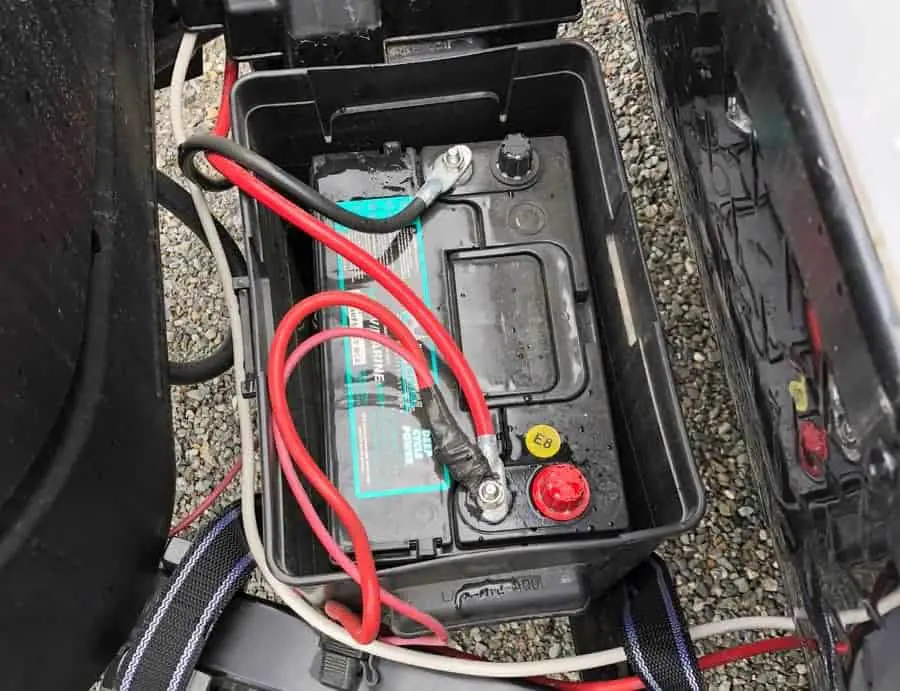
There are many types of batteries available for usage on your travel trailer or RV. The most common battery will be a deep cycle lead acid or AGM battery. If you are an avid camper, you may have upgraded to lithium. Some campers have one 12v battery, some have 2 12v batteries wired in parallel to produce 12 volts. Others may have 2 6 volt batteries wired in series to produce 12 volts, and you can also wire 4 6 volts to provide 12 volts. (there are many other combinations you can do with batteries, but these are the most popular ones.)
Lead Acid
Lead acid batteries have been in the marketplace for many years. These are typically less expensive and sizes can range from your typical group 24 up to a group 31 being the larger. Lead acid batteries are commonly available and can be picked up at your nearest store. Lead acid batteries are heavier than lithium, but for most users lead acid are adequate.
Lithium
Lithium batteries are newer to the RV marketplace and are more expensive than Lead Acid batteries. Lithium batteries are much lighter weight than lead acid, so if you have tongue weight problems or need a large battery bank, this may be an option to chose. These batteries will require a different charge profile so if you plan on installing solar with lithium, make sure your charge controller is compatible with lithium. If you compare the use on a 100 amp hour lead acid battery, you have 50% or 50 amp hours you can use before recharging. On lithium, you can discharge up to 80% giving you 80 amp hours of usage. For the same size of amp hour battery, you get 30 more amp hours of usage. Comparing a lithium to a lead acid, a lithium will have a smaller footprint as well.
Solar Panels
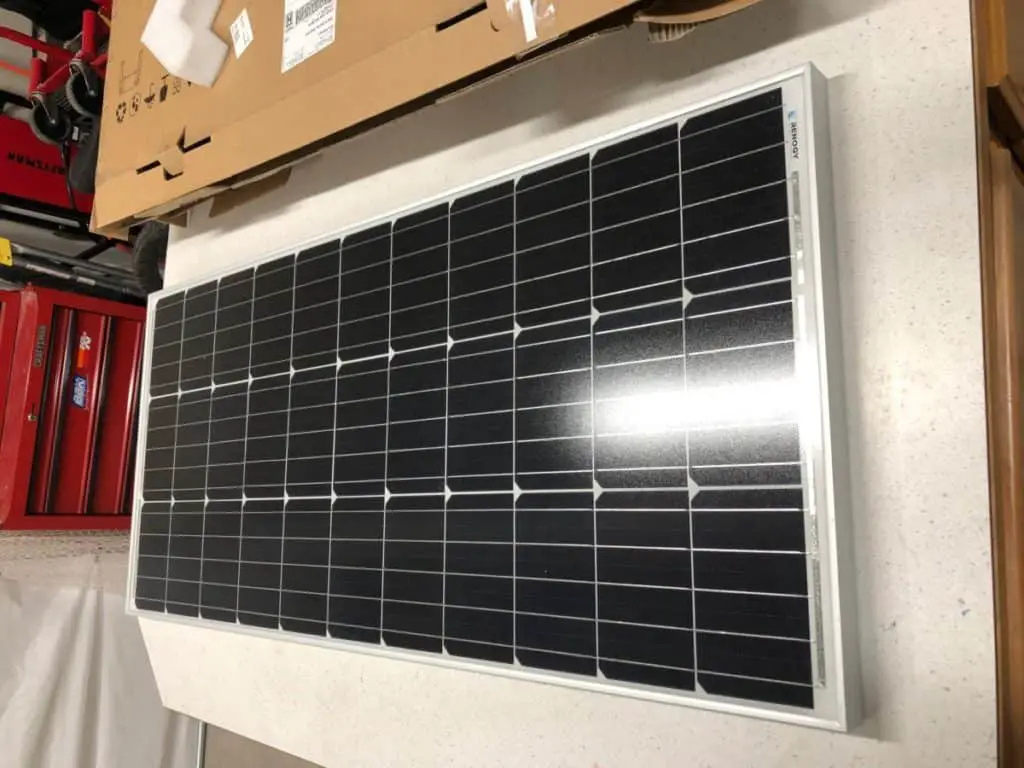
There are two types of solar panels commonly available in the RV market, monocrystalline and polycrystalline or also known as mono and poly. There is a large debate on what is better, or the ultimate battle; monocrystalline solar panels vs polycrystalline solar panels. Monocrystalline cells have higher efficiency rates, are smaller, and last longer than polycrystalline. Polycrystalline solar panels typically cost less, but have a larger footprint to make up 100 watts.
The easiest way to tell the difference is that, mono cells have a diamond pattern whereas poly cells have a square pattern. Monocrystalline cells are about 15-20% efficient whereas Polycrystalline cells are about 13-16% efficient.
Monocrystalline Solar Panels
| Pros | Cons |
| Higher efficiency rates of 15-20% | More expensive |
| Smaller footprint | Not great in partial shade |
| Longer lifespan | |
| Perform better in low light |
Polycrystalline Solar Panels
| Pros | Cons |
| Costs Less | Larger size |
| Lower efficiency 13-16% |
Flexible vs Flat
Of the two types of solar panels available, there are two subset panel styles, flexible panels and rigid flat panels. Flexible panels can be installed easier with a glue to fix the panel to your RV roof. This is better if you have a curved surface you are trying to install to. A large downside is that solar panels tend to cause heat, many users who have uninstalled their flexible panels have found that the extra heat cracked their rubber roof membrane and damaged their roof. For this reason, we do not recommend flexible panels.
Flat panels are your typical solar panel you see installed on houses, boats, or RV’s. These are rigid units with a medal frame with glass on the upper and lower part of the actual silicone panel to protect it. Flat panels are offset from the roof and allow the heat generated to dissipate due to airflow under the solar panel.
Tilt or not Tilt
If you have the ability to tilt your solar panels, you will get better efficiency, however the costs and time needed to manually tilt panels each time the sun moves or when you move spaces typically does not make tilting them worth it. Tilt kits can be purchased after the initial installation here if you are concerned about getting every last amp hour.
Charge Controller
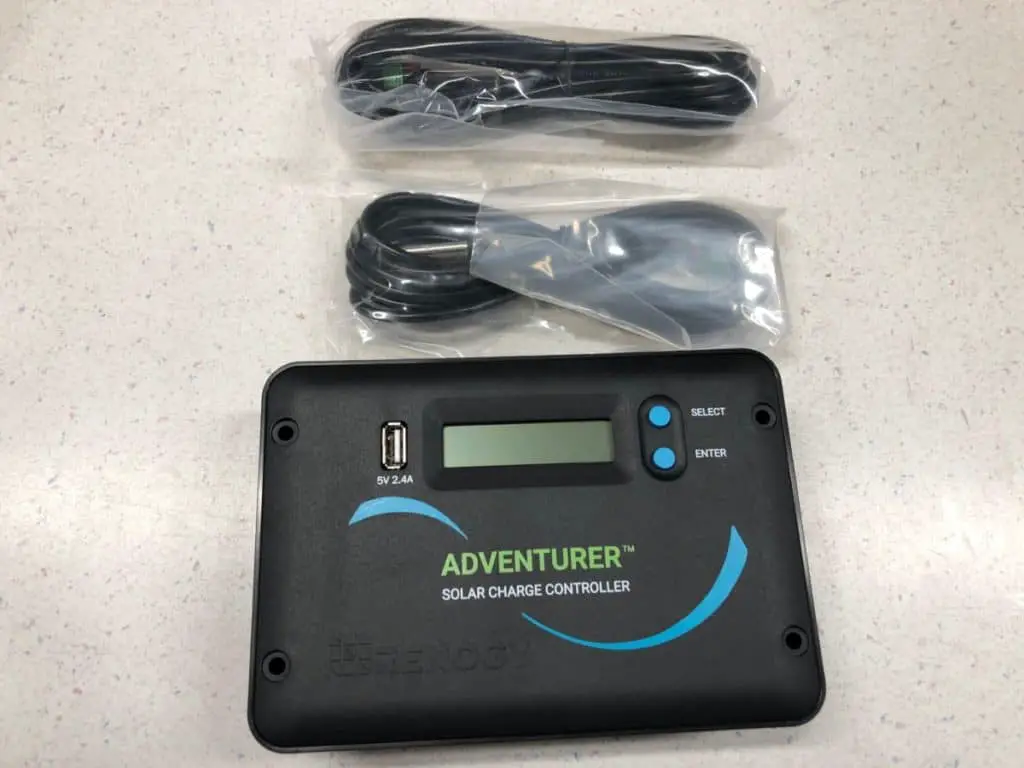
The charge controller takes power in from your solar panels and uses it to charge your batteries.
MPPT vs PWM
Pulse Width Modulation (PWM) charge controllers have been in use for many years, are very durable, and are typically less expensive than Maximum Power Point Tracking (MPPT) charge controllers. MPPT charge controllers are the newest charging technology available to the market. MPPT controllers can operate at a higher voltage and are more efficient as they can convert this extra voltage to amperage. For the typically travel trailer user, it doesn’t matter if you have a PWM or MPPT controller as there will be minimal differences. If you rely on your system as your only means for power, you may want to invest in a MPPT controller. The good news is you can always upgrade at a later date.
Estimating Solar Output
Now that we know the basics of a solar system, lets estimate a solar system output. From our math above, we remember a 100 watt panel is capable of producing 8.33 amps per hour. 200 watts will give you 16.67, 300 watts will give you 25 amps per hour, 400 watts will give you 33.33 amps per hour and so on. Most users won’t need above 400 watts of solar unless they have a large motorhome. These numbers are under perfect conditions, so in real life, you may see 5 amps per hour per 100 watt panel or less.
Calculate your load
The load of your travel trailer and items you plan to run will determine how much solar you will need on your roof. There are three methods of calculating your usage. Once you calculate your usage, you will find out how much solar you will need available on your rooftop.
Calculator Method
A good way to estimate usage is to use this handy calculator to determine how many amp hours you use per day. It is surprising that just having your propane alarm and propane fridge on which both use 2.5 watts and 2 watts respectively for one week will blow through 63 amp hours of your battery. If you have a 100 amp battery, you are well over the 50% safe discharge in only a week. If you are a weekend user and have two lights which are on for 1 hour per day each, use the fan and water pump for 15 minutes each, and run your propane fridge and propane alarm, you will use 153 watts in a day or 12.75 amp hours. With this usage, you can go about 4 days if you have a 100 amp hour battery provided you don’t use your heater, recharge cell phones, use more lighting or more water.
Using a Watt Meter
Watt meters are available online and can be plugged into your RV shore power or into each device you plan to do. The easiest way to determine your wattage is to just plug in your RV and use it like you would. This will tell you many items like wattage, amps used per hour, and amps used throughout the period. Remember not to use devices you would not use while on battery as it will skew your results such as your a/c system.
Ball Park while camping
The last method is the easiest, just go out and operate your trailer like you would, if you have 100 amp hours of battery and you need to recharge after 2 days as you are at 50% capacity, your ballpark use would be 25 amp hours per day. This can be replaced with 1-2 100 watt panels depending on where you live or what part of the season you are in.
Put calculations together to estimate how many panels
Once you have your calculations of how much energy you use while camping, you can match that up to how much amp hours a solar system will provide and determine what wattage you will need to install. If you use 25 amp hours per day, you would choose a solar kit to provide you with 25 amp hours or more per day.
How to choose a solar system
Rooftop solar vs briefcase solar
Another method of providing solar to your trailer is with a briefcase system such as this model. Most RV’s and travel trailers now days come preinstalled with a “solar ready” plug. This is just a glorified 12v extension to your batteries. To actually use this, you would need a solar kit with charge controller.
A briefcase system can be useful as you don’t have to hardwire or actually make any penetrations to the roof. For most users, this will be adequate and simpler than installing on the roof.
Some Pros of a briefcase solar system are that they are virtually plug and play, can be placed in a sunny spot if your RV is parked in the shade, and they are fairly inexpensive.
For us, there are too many cons to going with a briefcase system such as it is portable so it could get stolen if there is nowhere to lock it to, always having to set something out and have a cable to your rv, as well as not being able to be used while at the storage yard.
If you don’t like any of these cons, a rooftop solar kit is right for you.
Inverters
If you want the ability to run your coffee pot, charge your laptop, watch TV, or run other 110v devices while on battery, you probably are thinking about getting a sine wave inverter. An inverter converts your 12V DC battery power to 110V AC power. An inverter is fairly simple to install, you need to hardwire 12v power to the device and run a new outlet or extension cord which will be live power when your inverter is on.
There are more complicated systems such as inverters which work with your on board fuse panel which will make every outlet live, but we will just cover the cheaper 1-2 outlet uses as most campers only want one live outlet for when they need 110v power.
Series vs Parallel Solar Panels
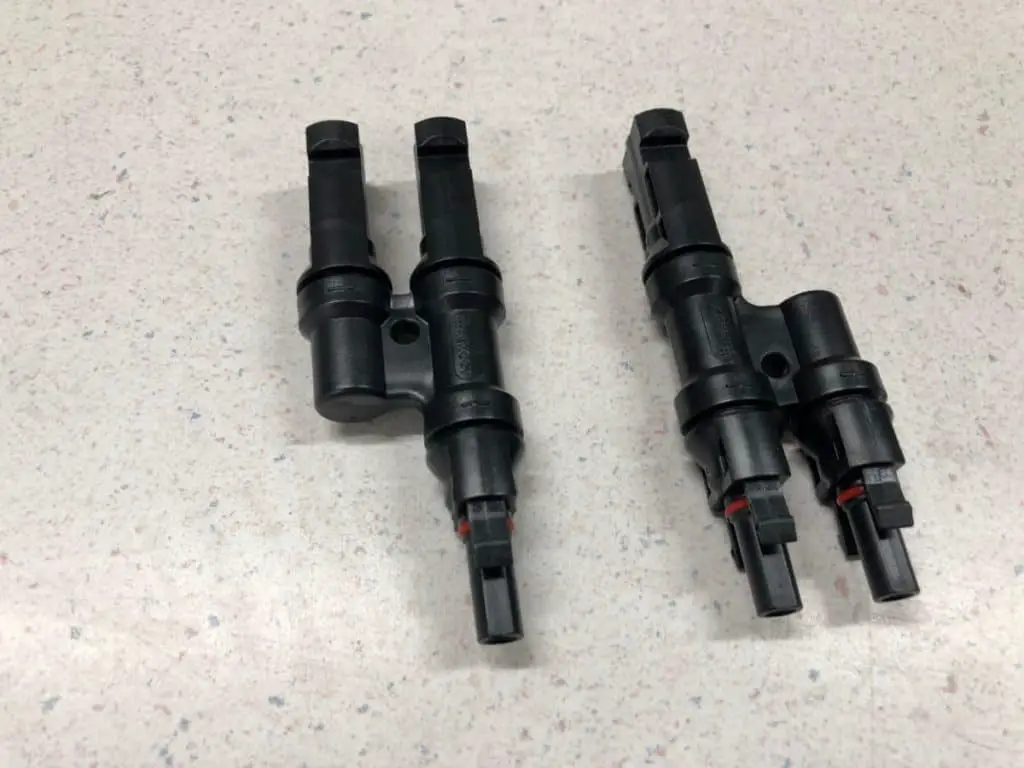
Solar panels can be wired in either series or parallel, just like your batteries. When you wire solar panels in parallel, the amperage doubles, but voltage remains the same. For example: two 100 watt panels wired in parallel will produce 8.33 amp hours each at 12 volts. Two of these panels will produce 16.87 amp hours at 12 volts. The downside of wiring in parallel is your wires can only carry a certain amount of amps and the more solar you add the more difficult it will be to transfer the power. Our solar system is wired in parallel.
When wiring solar panels in series, the amperage remains the same and voltage is added. Two 100 8.33 amp hour panels will produce 24 volts instead of 12. A huge downside of series is if one of your solar panels is covered by shade, the whole system will go down.
Conserving Power on Solar
Along with installing a solar kit to your RV, there are other items which may help you conserve power so you may not need as much wattage, or your batteries will recharge easier on a cloudy day.
Here are the quick tips:
Turn off all items when not in use. This includes power to your awning, tongue jack, lighting, radio, as well as water pump. Convert all of your lighting to LED. you would be amazed on how much battery power you can conserve with just converting your lighting. In the winter, adding extra insulation or stopping drafts can lower the amount of time you will need to run the blower motor on your heater. Read more tips about winter camping from our article here.
Conclusion
Hopefully you now know everything you would ever want to know about solar. With most kits, you can always add panels so you may not be in danger if you start with a 100 watt kit and find out you needed 200 watts. There are some economies of scale when you are on the roof with the drill, stud finder, and dicor sealant installing your panels, so it may be important to buy one more solar panel than you think you need.
Be the first to be notified about FREE tips, hints, coupon codes, and email-exclusive information. All for FREE!


